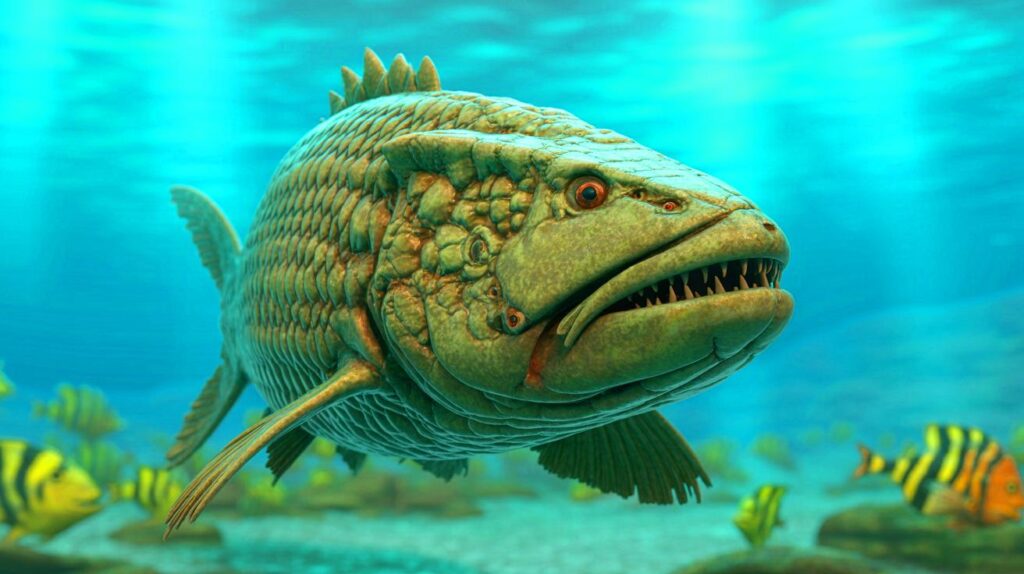| In Brief |
|
The dental pain we experience today may trace back to the armored skin of fishes that lived 465 million years ago. Researchers from the University of Chicago have recently highlighted a fascinating connection between the sensory structures of these prehistoric fishes and the sensitivity of our modern teeth. In this light, odontodes—previously enigmatic small protrusions—might hold the key to understanding why our teeth cause discomfort.
The Sensory Origins of Fishes
Through 3D scans of fossilized fishes, researchers discovered that odontodes were sensitive and likely used to detect environmental changes, such as cold water or the pressure of nearby objects. This finding has opened new avenues for exploring the sensory capabilities of Ordovician fishes.
Scientists noted that the odontodes of ancient fishes closely resembled sensilla, tiny sensory organs found in the shells of animals like crabs and shrimp. These similarities intrigued researchers, as these features evolved independently in very different animal groups: fishes, with spinal columns, and arthropods, lacking them.
This evolutionary convergence is a fascinating phenomenon where distinct species develop similar traits independently. As Dr. Yara Haridy, who led the study, explains, it illustrates how different organisms have found similar solutions to interact with their environments.
Fossil Confusions and New Discoveries
The results of this study also helped resolve a long-standing confusion in the fossil record. For decades, a Cambrian fossil, Anatolepis, was regarded as one of the earliest vertebrates due to its tooth-like protrusions. However, detailed analyses revealed that these structures lacked dentine and resembled the sensilla of arthropods.
This discovery allowed researchers to reclassify Anatolepis as an ancient arthropod rather than a vertebrate fish. It demonstrates how sensory structures can appear similar across different species, complicating their classification.
To broaden these findings, researchers compared fossils and modern specimens, ranging from snails to sharks. A notable observation was made with suckerfish raised in Dr. Haridy’s lab, which possessed tooth-shaped scales directly connected to nerves.
Evolutionary Sensory Tools
Denticulate structures, like ancient odontodes and arthropod sensilla, served not only as armor but also as sophisticated sensory tools. According to Haridy, early vertebrates, such as these large armored fishes, had similar structures to better perceive their environments.
This research also supports a crucial theory in evolutionary biology known as the “outside-in hypothesis.” This theory suggests that teeth evolved from external sensory structures like these. In other words, before animals developed teeth for their mouths, they had sensitive armor that helped them survive.
While the study did not identify the oldest vertebrate fish, lead author Professor Neil Shubin believes that this discovery is nonetheless valuable. By clarifying certain historical errors in the fossil records, researchers have unearthed intriguing aspects of the evolution of sensory structures.
The Impact of Discoveries on Our Current Understanding
These new discoveries have significant implications for our understanding of vertebrate evolution and biology. They reveal how sophisticated sensory traits could have developed independently in very different animal groups, illustrating the diversity and complexity of evolutionary mechanisms.
By clarifying the confusion surrounding Anatolepis, researchers have demonstrated the importance of detailed analyses for accurate fossil classification. This reinforces our understanding of evolutionary relationships between species and helps us trace the history of living organisms more precisely.
This study serves as a reminder that while some discoveries may seem insignificant at first glance, they can unveil deeply fascinating and unexpected facets of our evolutionary past. What other mysteries of evolution await discovery, hidden in the fossil records?







